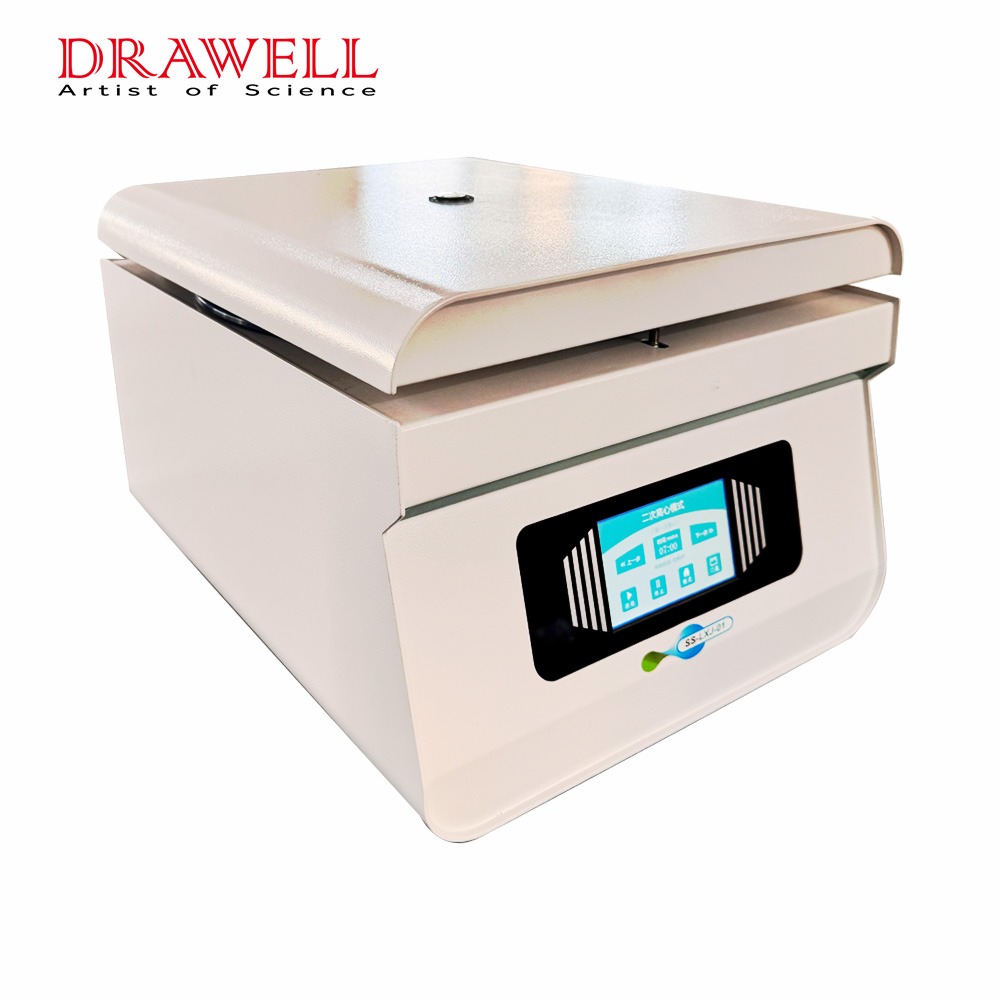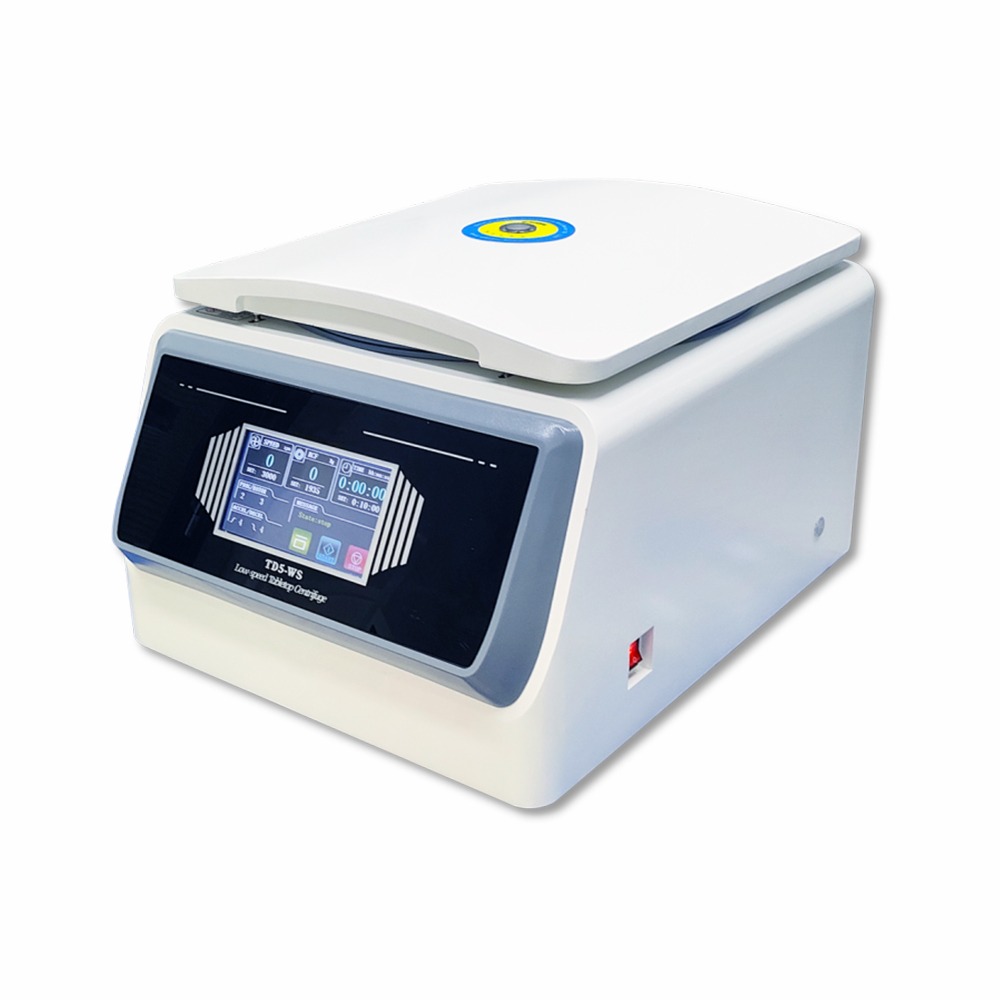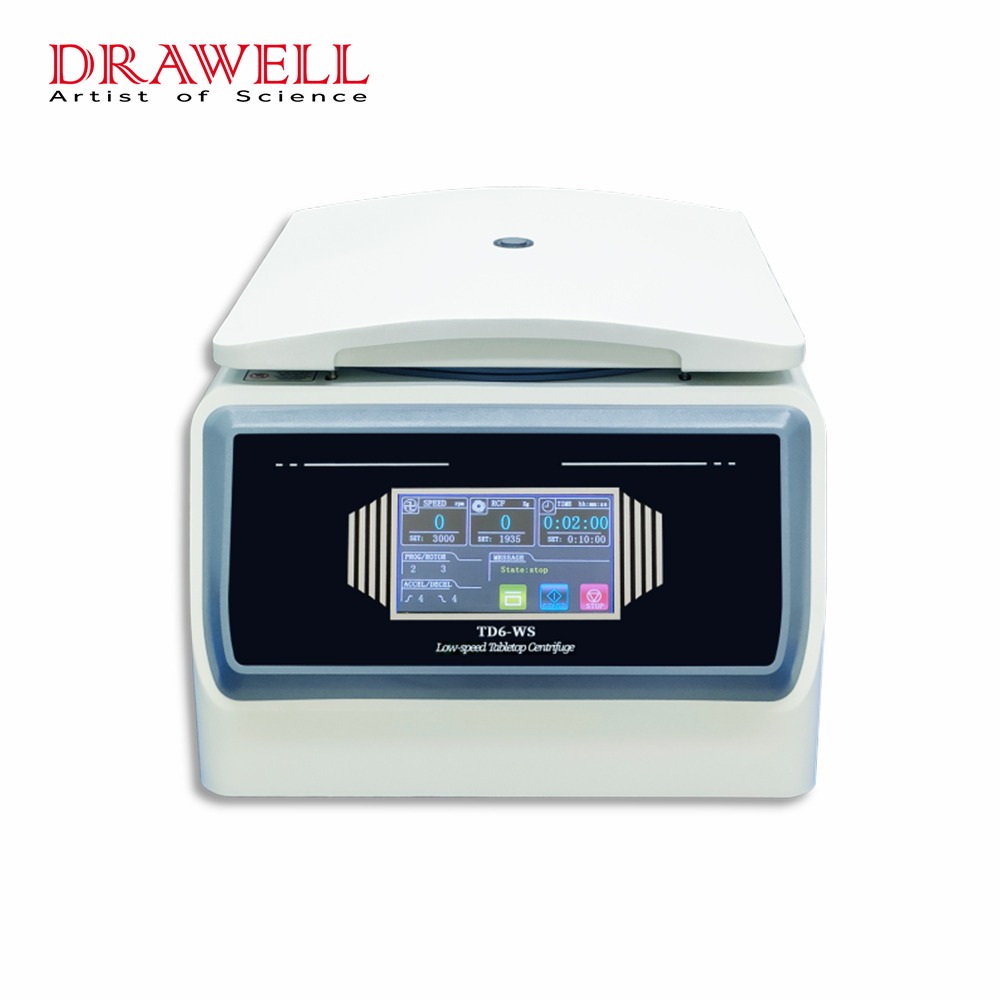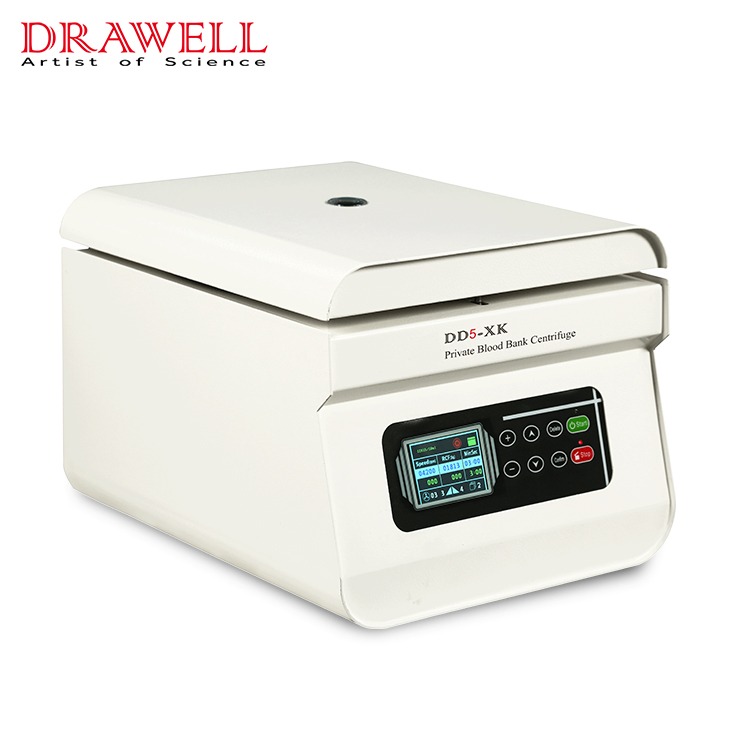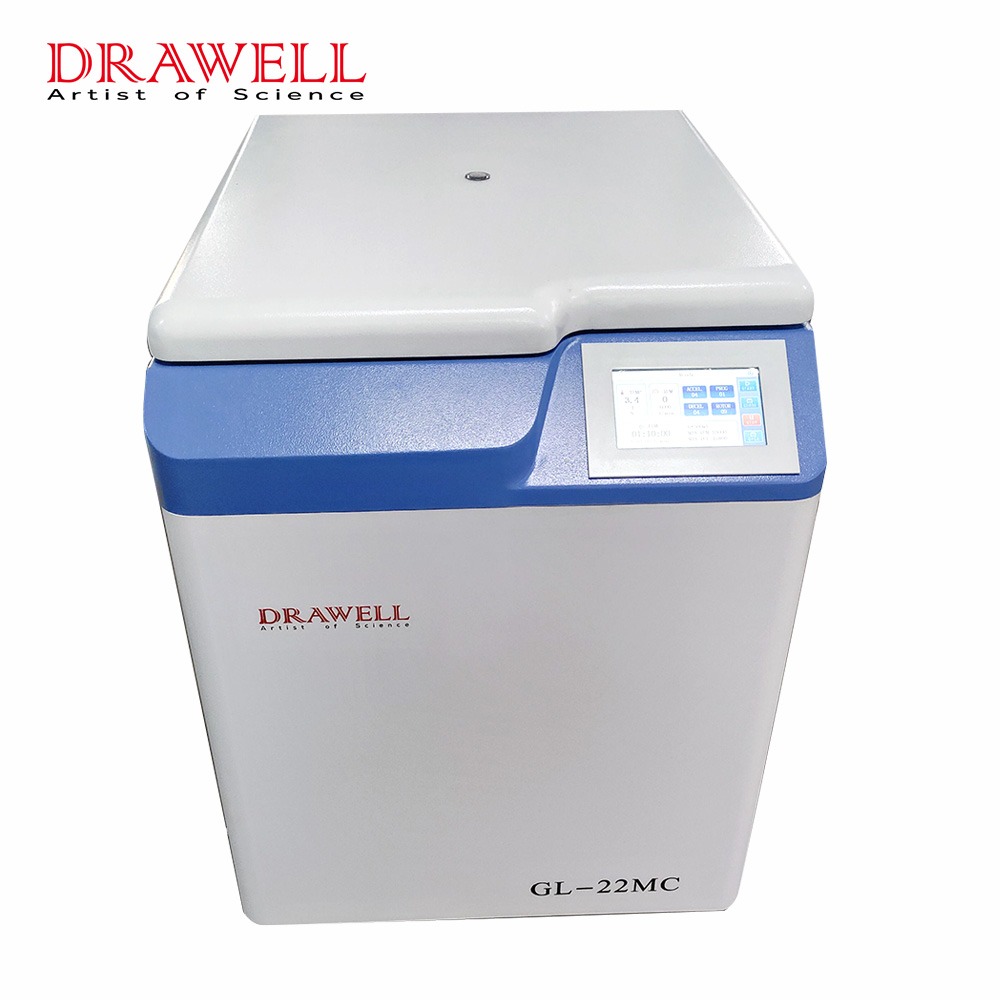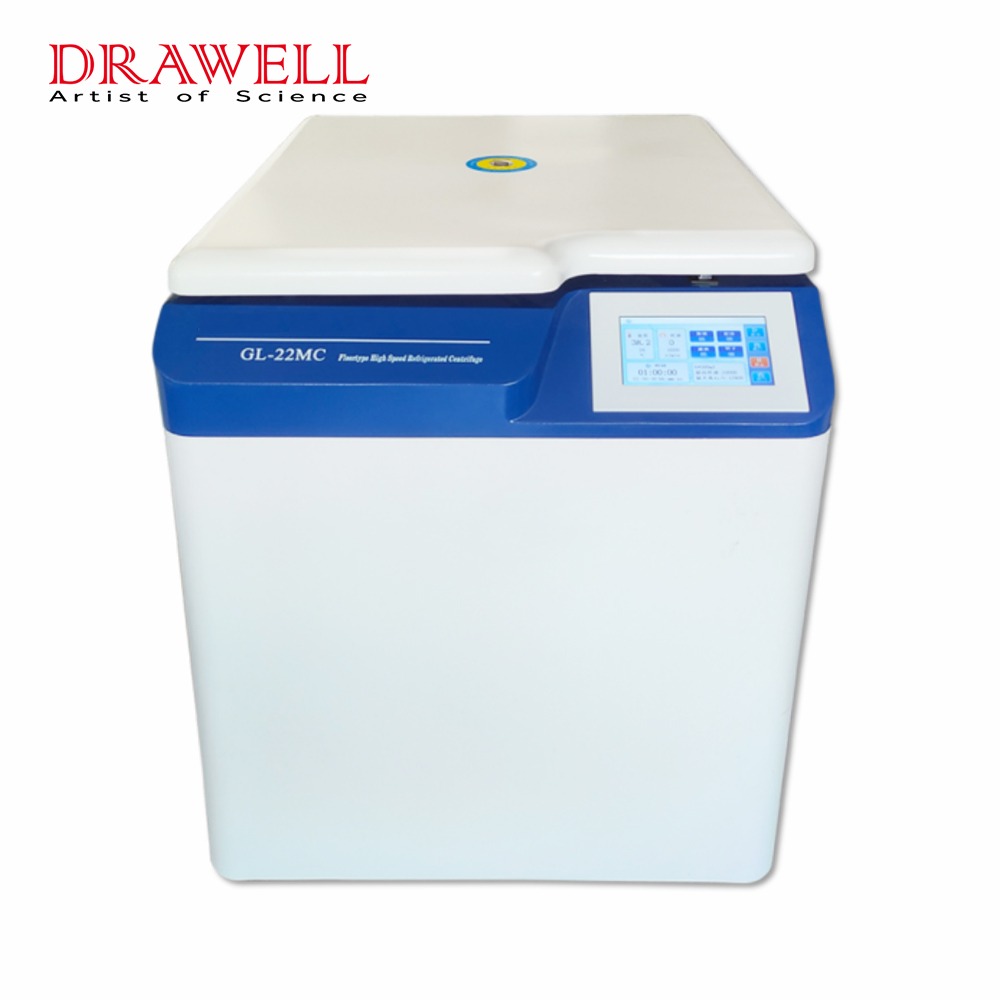In laboratories, efficiency often hinges on choosing the right tools for specific processes. Among essential lab equipment, vortex mixers and centrifuges play critical roles, though they serve vastly different purposes. While vortex mixers are used to mix or blend small liquid samples, centrifuges are designed to separate components within a sample based on density. Understanding the distinctions between these two tools can significantly improve lab productivity, maintain sample integrity, and streamline workflows.
This article explores the unique functions, operations, and applications of vortex mixers and centrifuges. By delving into their key differences and usage scenarios, helping you determine the optimal tool for your specific lab needs, enhancing overall lab efficiency.
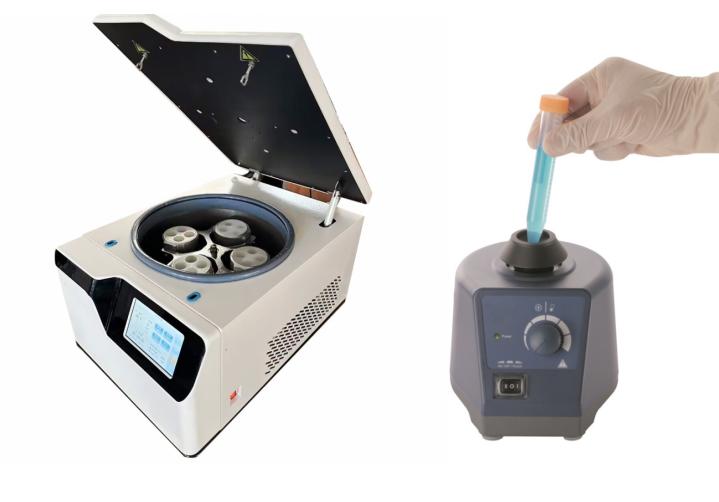
What are Vortex Mixers and Centrifuges?
While both vortex mixers and centrifuges are essential in sample preparation, they serve entirely different purposes and principle. Let’s get close to the basic information about this two equipments:
Vortex Mixers: Vortex mixers use a simple yet effective mechanism. They consist of a motorized base with a rubber cup or pad that holds a test tube, vial, or small container. When activated, the cup rapidly oscillates, creating a vortex or whirlpool effect within the sample. This motion effectively mixes liquids, suspends particles, or combines reagents quickly and uniformly, making vortex mixers popular in many laboratories.
Centrifuges: Centrifuges operate on a different principle, using centrifugal force to separate materials of different densities. They have a rotor that spins samples at high speeds, forcing denser components to move outward toward the bottom of the container, forming a “pellet.” Lighter components, meanwhile, remain as a “supernatant” layer on top. This separation process is invaluable in applications like blood fractionation, cell isolation, and molecular biology.
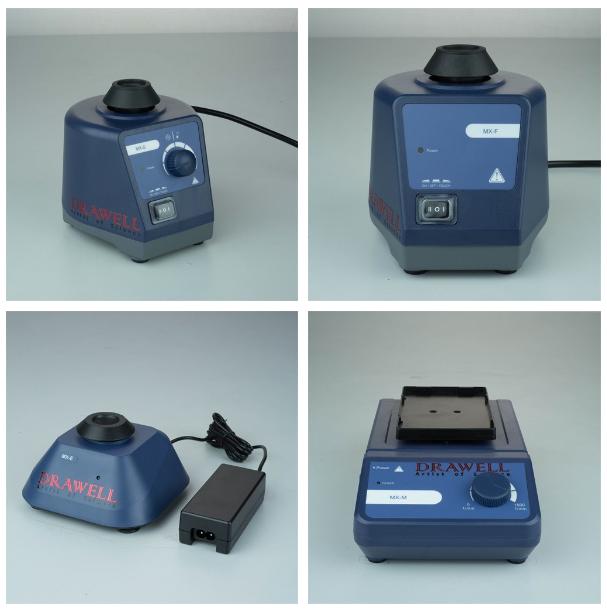
Key Differences Between Vortex Mixers and Centrifuges
Vortex mixers and centrifuges differ significantly in terms of functionality, operation, and purpose. Here are the primary distinctions:
Speed and Force
Vortex mixers operate at relatively low speeds, generating gentle mixing forces ideal for blending or suspending liquids. They rely on rapid oscillations that create a swirling or whirlpool effect, allowing for efficient, low-impact mixing.
In contrast, centrifuges are high-speed devices that produce significant centrifugal force. By rotating at speeds ranging from a few thousand to tens of thousands of RPM, centrifuges exert enough force to separate components based on density, making them essential for applications that require precise separation.

Applications
The applications of vortex mixers and centrifuges highlight their contrasting purposes. Vortex mixers are primarily used for general mixing tasks, such as homogenizing solutions, preparing reagents, or resuspending cells. They provide quick and effective blending for small liquid samples without altering the composition.
Centrifuges, on the other hand, are designed for density-based separation, essential in applications that require the isolation of different components within a sample, such as blood fractionation, DNA extraction, or cell pellet formation. This makes centrifuges indispensable in research, clinical, and analytical settings where component separation is key.
Sample Types
The types of samples suited to vortex mixers and centrifuges differ based on their respective functions. Vortex mixers work exclusively with liquid samples, as their purpose is to mix and blend liquid solutions or cell suspensions.
Centrifuges, however, can handle both solid-liquid and liquid-liquid mixtures, making them versatile for tasks that involve separating solids (like cells) from liquids or isolating various liquid phases, as in blood separation. This versatility enables centrifuges to support a broader range of applications.
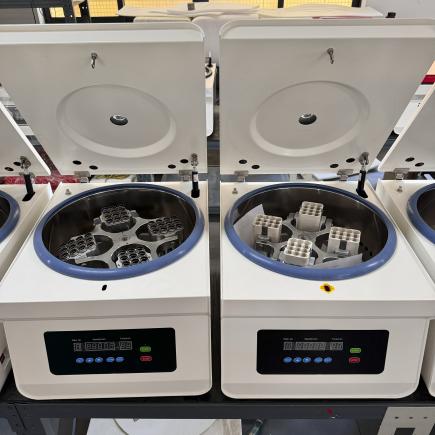
Capacity and Scale
Capacity and scale are also notable distinctions. Vortex mixers typically accommodate single tubes or small containers, making them ideal for individual, quick-mix applications.
Centrifuges, in contrast, are designed to process multiple samples simultaneously. Depending on the model, a centrifuge can hold numerous tubes, microplates, or even large bottles, allowing for high-throughput operations that are especially valuable in busy labs or experiments involving large sample volumes.
Cost and Complexity
From a cost and maintenance perspective, vortex mixers are simpler, budget-friendly devices that require minimal upkeep. Their straightforward design and low operational demands make them accessible and easy to maintain, fitting well within the budgets of most labs.
Centrifuges, however, represent a greater investment. Their complexity, combined with the need for regular calibration and maintenance to ensure precision, makes them more costly both initially and in terms of upkeep. Despite these higher costs, their versatility and essential role in sample separation justify the investment for labs with specific needs.
Here are the summary table of these differences:
| Aspect | Vortex Mixers | Centrifuges |
| Speed and Force | Operates at low speeds, creating a gentle mixing effect ideal for combining liquids. | High-speed rotation, generating significant centrifugal force for density-based separation. |
| Applications | Primarily used for general mixing, such as preparing solutions, blending reagents, and suspending cells. | Specialized for density-based separation, crucial for blood fractionation, DNA extraction, and isolating cell components. |
| Sample Types | Best for liquid-only samples, providing even mixing in solutions or suspensions. | Suitable for both solid-liquid and liquid-liquid mixtures, enabling separation of cells, particles, and liquid phases. |
| Capacity and Scale | Designed for single-tube operations, accommodating small sample volumes for quick mixing. | Can process multiple tubes, microplates, or bottles, allowing high-throughput for larger sample volumes. |
| Cost and Complexity | Simple, affordable, and requires minimal maintenance, fitting within most lab budgets. | More complex and costly, with maintenance needs for calibration, ideal for labs needing versatile sample separation. |
By recognizing these differences, labs can make informed choices to enhance precision, conserve resources, and avoid sample damage.
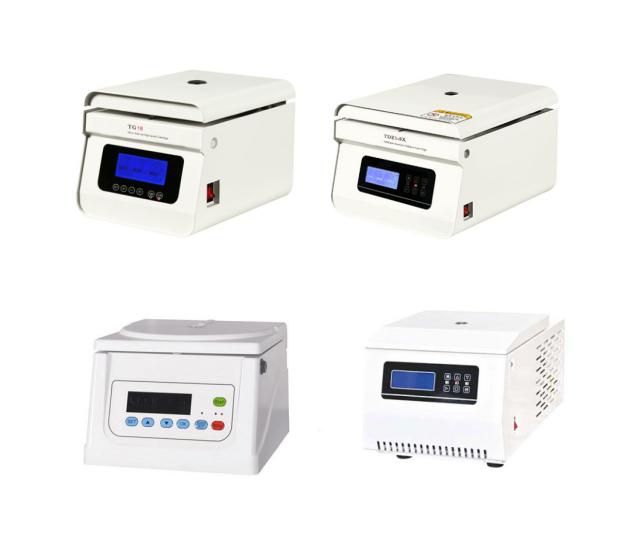
When to Use Each Tool for Optimal Lab Efficiency
Knowing when to use a vortex mixer versus a centrifuge is essential for achieving efficient and effective sample preparation.
When to Use a Vortex Mixer
- General Mixing: Vortex mixers are ideal for quickly and uniformly mixing small liquid volumes in test tubes, vials, or microplates. They are perfect for preparing samples for analysis or creating homogenous solutions.
- Cell Suspension: In cell culture, vortex mixers are used to resuspend cells in solution, making them ready for subsequent experimental steps.
- Reagent Preparation: When combining multiple reagents in a test tube, a vortex mixer ensures even distribution without separating components.
In summary, vortex mixers are best for situations requiring quick and uniform mixing of small, homogenous liquid samples, particularly in cell culture and biochemical assays.
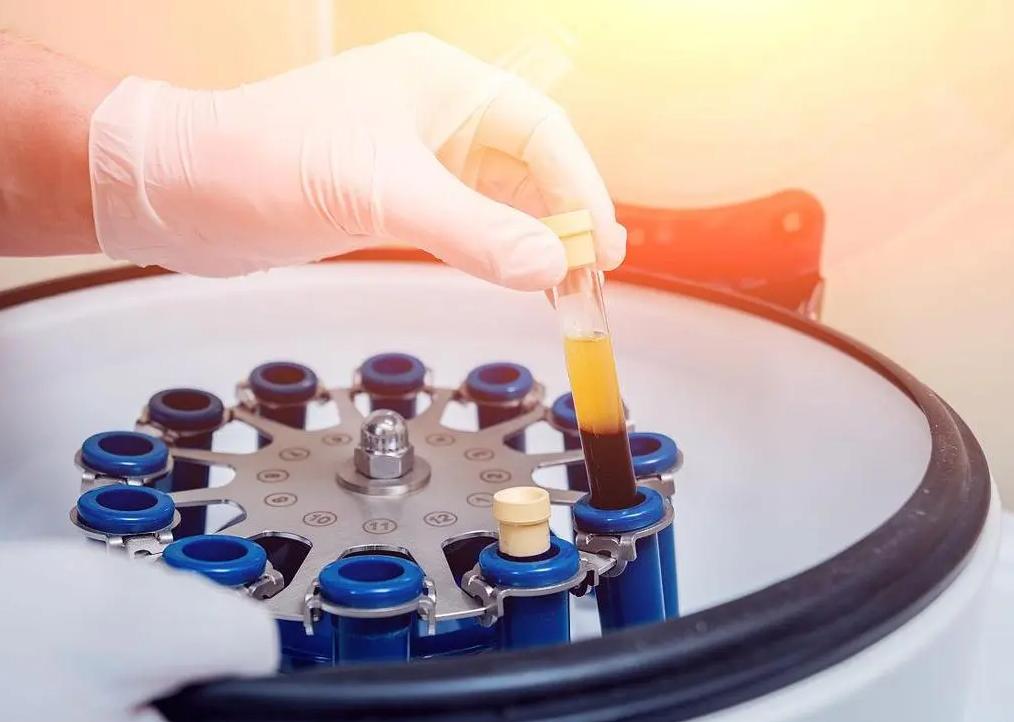
When to Use a Centrifuge
- Separation of Sample Components: Centrifuges are essential for tasks like separating blood components, isolating cellular structures, and fractionating biomolecules. They are irreplaceable in clinical diagnostics, molecular biology, and biochemical labs.
- Purification and Concentration of Samples: In molecular biology, centrifuges are used to concentrate DNA, RNA, or protein samples, separating them from contaminants or unwanted phases.
- Isolation of Particles Based on Density: Centrifuges are effective in separating particles such as cells, organelles, or viral particles based on density, crucial in cellular biology research.
In short, centrifuges are ideal for applications requiring the separation or concentration of different sample components, particularly in analytical and clinical settings.
Situations Where Both May Be Used
- Sample Preparation in Cell Culture: In cell culture processes, a vortex mixer might be used initially to suspend cells, and a centrifuge could follow to separate and concentrate the cells or organelles.
- Molecular Biology Experiments: In procedures like DNA extraction, a vortex mixer might mix samples with reagents, while a centrifuge is then used to separate DNA from other cell debris.
In workflows involving both mixing and separation steps, using both tools efficiently can streamline the process and improve sample quality.
Choosing the Right Tool for Your Lab Needs
Selecting the appropriate tool depends on your lab’s specific requirements and budget. Here are some factors to consider:
Application Type: Consider the main purpose of your lab work. If it involves frequent mixing of reagents or preparing small volumes, a vortex mixer is a practical choice. For labs focused on cellular separation, blood analysis, or molecular biology, a centrifuge will be more valuable.
Sample Volume and Throughput: If your lab processes large sample volumes or needs to handle multiple samples simultaneously, a centrifuge with higher capacity is essential. Conversely, if you only need single-sample mixing, a vortex mixer is sufficient.
Budget and Maintenance Requirements: Vortex mixers are more affordable, simpler, and require minimal maintenance, making them suitable for labs with tighter budgets. Centrifuges are an investment and require regular calibration, so plan for maintenance costs if opting for a centrifuge.
Choosing the right tool involves evaluating these factors and understanding each device’s role in your laboratory setup. Selecting the correct equipment improves workflow efficiency, protects sample integrity, and ensures that your lab meets both its technical and budgetary needs. Drawell can provide you different types of vortex mixers and centrifuges, feel free to contact us for more information.


